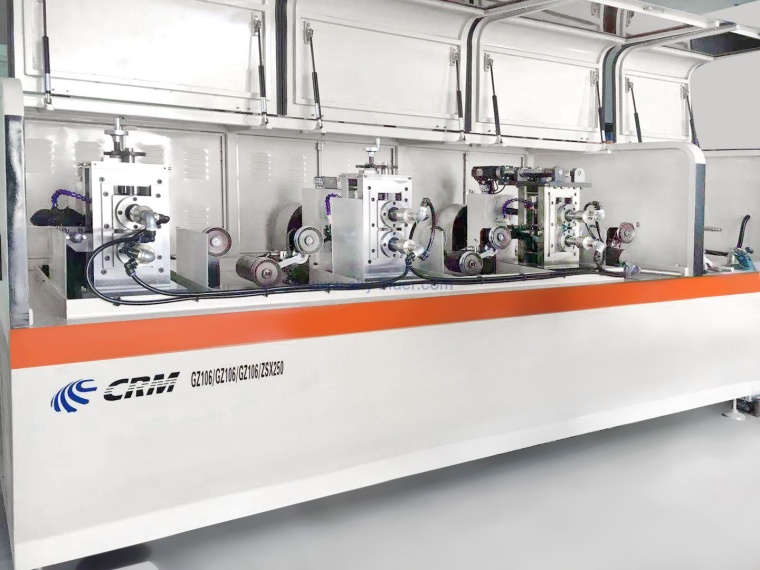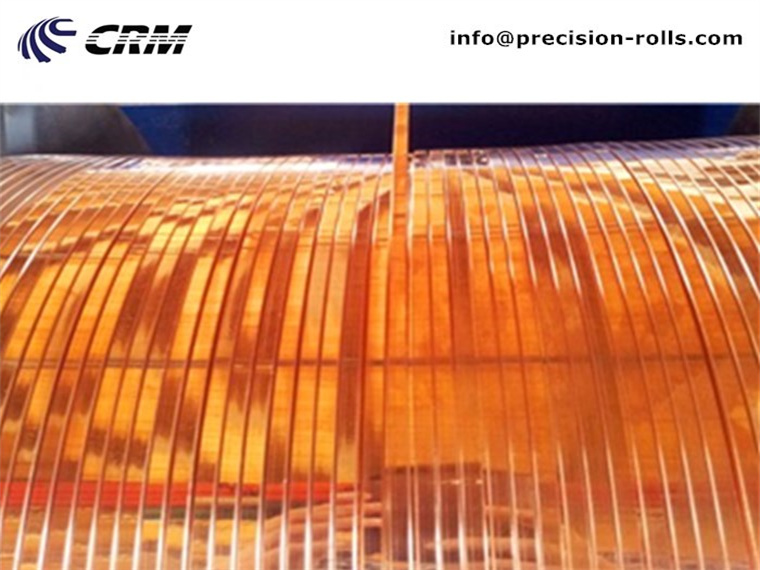Copper wire is a fundamental material in today’s industrial applications. Whether used in transformers, enameled flat wire, electromagnetic flat wire, electric vehicles, or renewable energy systems, copper’s superior electrical conductivity and mechanical flexibility make it essential. In particular, flat copper wire has gained prominence for its space-saving structure, enhanced efficiency, and stable performance.
So, how is round copper wire transformed into flat wire? As a trusted flat copper wire machine manufacturer in China, we’ll walk you through the complete process — from wire preparation to final finishing — and show how partnering with the right supplier can greatly improve product quality and cost efficiency with our advanced CRM machines.
1. Understanding the Role of Flat Copper Wire in Industrial Applications
Flat copper wire offers several performance and economic advantages over traditional round wire. It is widely used in:
Motors and transformers, where tighter coil winding increases power density.
Electric vehicles (EVs) and battery systems, which demand high current-carrying capacity and efficient heat dissipation.
Electronics and communication devices, where space-saving design and dimensional precision are crucial.
Compared with round wire, flat wire provides:
Better packing density, saving space and material.
Higher conductivity and reduced energy loss.
Improved heat management, extending component lifespan.
These advantages make flat copper wire an ideal solution for next-generation electrical and electronic products.
2. The Principle for Our Brand CRM machines Behind Rolling Round Wire into Flat Wire
The process of turning round copper wire into flat wire relies on cold rolling technology. Through controlled pressure applied by precision-engineered rollers, the round wire is compressed and elongated to achieve the desired flat cross-section.
This transformation not only changes the shape but also refines the wire’s mechanical strength, surface quality, and consistency — all critical for high-performance applications.
3. Step-by-Step Flat Wire Rolling Process
Step 1: Preparing the Copper Wire
Production begins with high-purity, oxygen-free copper wire. Before use our rolling equipment, the wire must be clean and defect-free. Any surface oxide or impurity could cause microcracks during compression. The wire is often annealed beforehand to enhance ductility and workability. As a turnkey solution manufacturer, we provide polishing and multiple cleaning machines that can be integrated seamlessly with our rolling mills.
Step
2: Cleaning and Straightening
Straightening is essential in wire rolling to ensure proper alignment and tension. Wires often develop bends or internal stresses from drawing or coiling, which, if uncorrected, can cause uneven rolling, surface defects, and dimensional inaccuracies.
Step 3: Rolling and Shaping
This is the core process. The wire passes through rolling cassettes or flat rolling mills, where pairs of hardened rolls compress it into the required shape.
Depending on the target thickness, the wire may undergo several rolling passes. Each pass reduces thickness and adjusts width while maintaining dimensional accuracy and surface finish.
Step 4: Intermediate Annealing
As copper wire is progressively flattened, it accumulates internal stress that can reduce its flexibility and make it prone to cracking. To address this, intermediate annealing is applied — a precise heating process that restores the wire’s ductility and workability. Our inline annealing systems allow this treatment to occur seamlessly during production, combining rolling and heat treatment in one continuous process. We also offer a range of annealing furnaces to suit different needs, including tubular, electric-heated, and both large and small-scale units.

Step 5: Finishing and Calibration
After annealing, the wire is passed through finishing rolls to achieve the exact required dimensions and smooth surface quality. At this stage, strict control of flatness, edge precision, and tolerance ensures the wire meets the customer’s technical requirements.
Step 6: Inspection and Packaging
Each batch of flat copper wire undergoes detailed quality checks, including:
Dimensional and geometric accuracy
Surface quality inspection
Electrical conductivity measurement
Mechanical strength testing
Only wires that pass all inspections are coiled, labeled, and packaged for delivery.
4. Key Equipment in the Rolling Process
To ensure consistent and high-quality production, a flat wire rolling line typically includes:
Wire drawing machine – Reduces initial wire diameter.
Rolling mill – Flattens the wire into the required shape.
Inline annealing system – Restores ductility and controls structure.
Turkshead straightener – Aligns and stabilizes the wire edges.
Automatic take-up unit – Winds finished wire with proper tension.
Automatic payoff-up unit – Rewinds finished wire with proper tension.
The seamless integration of these components guarantees smooth production and precise control of every technical parameter.
5. Factors Influencing Price and Production Cost
The price or cost of rolling round copper wire into flat wire depends on several factors:
Raw Material Cost: Copper prices fluctuate in global markets and often represent the largest portion of total cost.
Machine Quality: High-precision rolling machines minimize waste, improve yield, and lower long-term operating costs.
Production Efficiency: Continuous inline processes save labor and energy, enhancing cost-effectiveness.
Supplier Location: Choosing a manufacturer in China can significantly reduce investment and operation costs while maintaining world-class quality standards.
6. How to Choose the Best Manufacturer or Supplier
Selecting the right manufacturer or supplier determines not only your product quality but also your long-term profitability. Here are key criteria to consider:
Experience and Technology: A reputable supplier should have years of expertise in fine wire rolling and high-speed production.
Customization Capability: Every production line has different requirements — thickness range, width tolerance, or surface finish. The best suppliers provide tailored solutions.
Comprehensive Support: Reliable after-sales service, on-site training, and spare parts supply
Competitive Pricing: Look for cost-efficient solutions without compromising on precision or reliability.
Global Export Experience: A supplier experienced in international standards can better support your business expansion.
7. Why Choose Manufacturers from China
In the last decade, China has become a leading hub for copper wire machinery manufacturing. Chinese companies now combine advanced automation, precision design, and competitive pricing, offering one of the best value-to-cost ratios worldwide.
Many customers from Europe, the USA, and Japan choose Chinese manufacturers for their reliable performance, technical innovation, and excellent service. With continuous improvements in technology, China’s equipment quality is now comparable to — and often exceeds — that of traditional European brands, but at a more reasonable price.

8. Tips for Successful Flat Copper Wire Production
To achieve high productivity and consistent wire quality:
Define your target specifications clearly before production.
Use precision rolling and annealing machines to maintain consistency.
Keep copper surface cleanliness and proper lubrication.
Employ automatic tension and speed control systems.
Choose a trusted equipment supplier who can provide technical guidance and training.
By following these steps, you can improve production yield, reduce downtime, and ensure a stable supply of high-quality flat wire.
9. Conclusion
We provide type of machines for Rolling round copper wire into flat wire is a precise process that requires advanced machinery, skilled operation, and continuous quality control. From wire preparation and cleaning to rolling, annealing, and inspection, every stage must be carefully managed to ensure consistent performance.
If you are searching for the best manufacturer and supplier in China for copper wire rolling equipment, Sky Bluer Environmental Technology Co., Ltd is your ideal choice. With years of experience in wire rolling machines, fine wire drawing systems, and turnkey production lines, Sky Bluer delivers high-performance solutions trusted by clients in Europe, the USA, and Japan.
Sky Bluer Environmental Technology Co., Ltd — Your trusted partner in precision copper wire rolling solutions.
Whatsapp me:+86 138 6131 3954